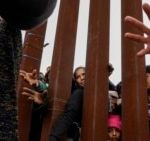According to a local ethnic militia, they were civilians who had taken refuge there to escape shelling and army troops. The Nan Nein village that was attacked is located along an essential supply road. The incident once again demonstrates the brutality of the conflict.
Yangon ( / Agencies) – At least 28 people, including three Buddhist monks, were massacred by the Burmese coup junta in southern Shan State. It was reported by the Karenni Nationalities Defense Force (KNDF), one of several ethnic militias fighting the army since the February 1, 2021 coup.
On March 11, the air force attacked the village of Nan Nein: so the soldiers were able to gain entry, killing civilians who had taken refuge inside the local monastery. A video released by the KNDF shows at least 21 bodies on the floor and the walls of the place of worship riddled with bullets. According to a militia spokesman, it appears that the military “lined them up in front of the monastery and brutally shot everyone, including the monks.” Later, another seven bodies were found in the vicinity of the town, the group told the BBC.
In recent months there has been an upsurge in civil conflict after the coup. It is favored by the dry season, like last year, while the monsoon season, which runs from May to October, tends to cause major inconvenience for both air forces and ground troops.
According to another local organization, only in the first two months of 2023, West Chin State was bombarded by the military junta at least once a day.
The village of Nan Nein is located along a road connecting Shan State with Kayah State and is considered essential for bringing supplies to the militias. The Shan, Karenni and Pa-O ethnic groups coexist in the region, but unlike the other two, the latter is an ally of the Burmese army and has received strong military support in recent weeks as the Junta tries to reconquer the villages occupied by the anti-coup militias.
The villagers of Nan Nein probably thought they would find a safe haven inside the monastery, as the monks are respected figures in the area. However, the coup has changed the balance between the ethnic groups in Burma: the country is made up mostly of the Bamar ethnic group, mainly of the Buddhist confession, which is concentrated in the central areas of the nation, and which, for this reason, , was spared from armed confrontations in the past.
Since independence from the British colonial empire in 1948, ethnic militias living mainly near the borders have been fighting the central government and demanding greater autonomy.
After February 1, 2021, the ethnic militias not only joined forces with each other, but allied with the People’s Defense Forces (PDF), armed groups loyal to the Government of National Unity in exile. They are made up of young people who belong to the Bamar majority and come from the central areas of Burma, a fact that commentators say has never happened before.
Figures from the UN state that, as a result of the civil conflict, 40,000 homes were destroyed, around a million and a half are displaced, and at least 8 million children do not attend school, while 15 million people are at risk of dying. hungry.










